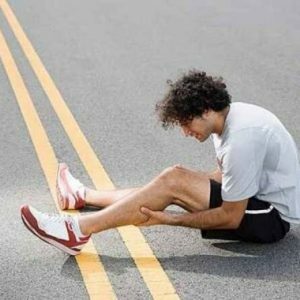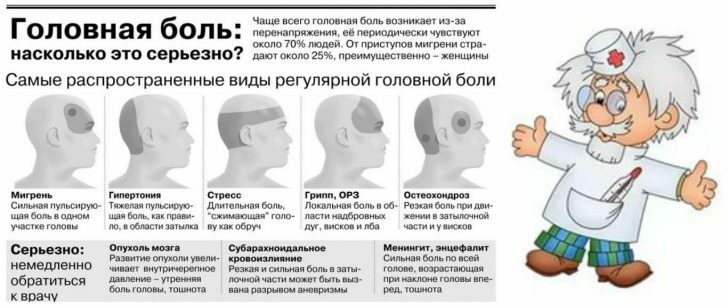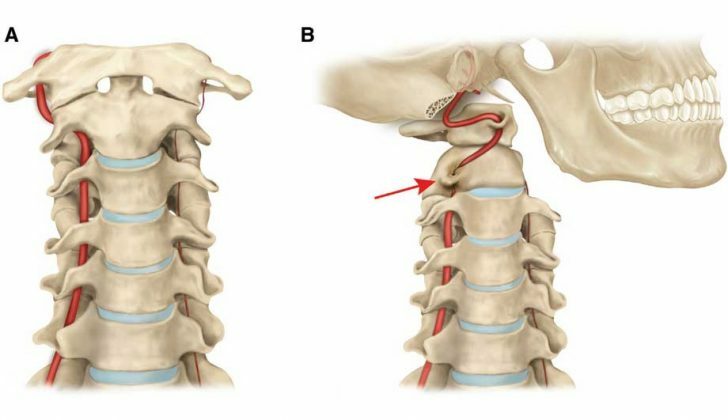Intercostal neuralgia - symptoms and treatment at home
«Intercostal space"- the medical term for the intercostal space (the space between the ribs). «Neuralgia»- refers to a sharp shooting pain in the nerves (intercostal) caused by irritation and damage.
Intercostal neuralgia - a sharp shooting pain felt along the nerves located between the ribs. Although intercostal neuralgia is rare, it is difficult for a person suffering from it to endure pain during this life.
Content
- Causes
- Intercostal neuralgia symptoms
- Diagnosis of the disease
- How is intercostal neuralgia treated in hospitals?
- Medication (pharmacy) preparations for the rapid removal of inflammation and excruciating pain in the area of the intercostal nerves - treatment at home
- Folk methods of self-medication at home
- List of popular folk remedies for therapy
Causes

Often, changes in the ribs affect neuralgia: degeneration; inflammation; a tumor that affects the human nervous system. Peripheral nerve trunks are most often affected by the disease. There are a number of main reasons that affect the manifestation of neuralgia:
- Spinal injuries, the nature of their development;
- Hormonal disruptions before menopause in a female;
- Alcohol abuse;
- Strong tension of the spinal muscles, inflammation;
- Neoplasms (tumors) in the chest;
- Injuries, diseases of the spinal column, ribs;
- Diabetes;
- Diseases of the digestive tract;
- Avitaminosis, lack of minerals;
- Thoracic nerve injuries;
- Diseases of the heart, blood vessels;
- Excessive use of drugs, microbial toxins, poisoning with neurotropic poisons;
- Osteochondrosis in a progressive form;
- Weakened immune system (the problem is solved raising immunity with folk remedies in adults);
- Herpetic inflammation of the nervous tissue;
- Increased cortisol (stress hormone), as a result of which stress occurs (according to recent studies conducted in Germany, 87% of all possible diseases arise as a result of stress).
Intercostal neuralgia is a rare condition, usually caused by severe trauma or damage to the intercostal nerves. For the manifestation of the disease in women, it may be accompanied by the wearing of tight underwear, for example, bras with hard bones that press on the chest area, causing inflammation.
The female body can develop neuralgia due to thinness, since a very thin body has very little fatty tissue, and the nerves are located very close to the skin.
Intercostal neuralgia symptoms

The most painful is the intercostal neuralgia on the right. The patient experiences a sensation of severe pain syndrome, especially on inhalation / exhalation, coughing. On palpation between the ribs and the vertebra, the painful sensations only intensify, especially if the affected areas of the nervous tissue are found.
Symptoms of intercostal neuralgia on the right are very bright. In many cases, patients feel pain in the area of the right rib, lower back and around the shoulder blades. A person can be affected by seizures over time. There are several main symptoms with the disease:
- Penetrating pain effects with little or no stopping.
- Burning, tingling.
- Spasms that can be attributed to heart pain.
- Strengthening the painful effects of movement.
These are the main signs of neurology. At the same time, the left-sided and right-sided symptoms are somewhat different.
Right-sided neuralgia affects the chest area in the form of loss of sensation. At this point, pain symptoms may occur on the other side of the body, which deepens the development of the disease.
Read also:Amyotrophic lateral sclerosis (ALS)
The discomfort in the heart region lasts a short time, and the pain is relieved after the use of nitroglycerin. But heart pain (confused with intercostal) will be given to the area of the arm and shoulder, when breathing, the pain does not change, there is a violation of the rhythm of the heartbeat.
Intercostal neuralgia is a constant pain sensation that can occur at night. days, with palpation, it will only intensify, as well as the movement of a person, for example, slopes. Inflammatory processes carry a number of manifestations of new symptoms:
- man starts sweat a lot;
- in the area of formation of the disease, the color of the skin changes, it becomes pale or red;
- there is an automatic muscle contraction in the area of inflammation.
Chickenpox with neuralgia.
In medical practice, rarely, but still occurs chickenpox in adultswith intercostal neuralgia. To the above symptoms are added rashes on the surface of the chest and back. Smallpox can trigger neuralgia. For this, the manifestation herpes zoster or shingles. Correct therapy will contribute to the disappearance of the rash, while the person may continue to feel pain for a long time. Experts call this type of inflammation postherpetic neuralgia.
Diagnosis of the disease
At the first stage of diagnosis, the patient's history is compiled. The doctor analyzes all complaints and makes a visual examination. As a rule, specialists establish a diagnosis after manipulation. With a more severe nature of the disease, an instrumental examination takes place. For example:
- If a specialist suspects an injured nerve condition, electroneuromyography (ENMG, electromyography, EMG) is performed.
- Intercostal neuralgia in the chest area is determined by CT, MRI of the spinal column. Additionally, the presence / absence of neoplasms or hernias in the soft tissues of the body is examined.
- X-ray of the chest, spine.
- OAM (General urine analysis,clinical urine analysis), UAC (expanded blood test, general blood analysis) - mandatory tests if pain from the chest area is given to the lower back.
- Analysis for the presence of antibodies to viruses (analysis for antibodies to cytomegalovirus igg) - for the study of nerve damage in an infectious way.
A complete diagnosis allows the therapist to prescribe a progressive therapy that can eliminate intercostal neuralgia.
How is intercostal neuralgia treated in hospitals?
With this disease, the patient is treated by a neurologist and neurosurgeon. The main task of the neurologist is to prescribe a therapy that will eliminate the causes of the disease that caused the pinched / inflamed nerve.
In some cases of intercostal neuralgia, treatment may not be necessary because the injury or damage will be minor and there will be little or no pain. However, in other cases, therapy may be required, and doctors will have to resort to pain relievers and various injections, including non-steroidal anti-inflammatory drugs, corticosteroids, antidepressants, antihistamines and antiviral drugs. For patients who have persistent pain for a long time, the nerve endings are removed.
For acute pain syndrome the patient is prescribed:
- bed rest for several days (it is important that the bed is hard, for this you can install a furniture board under the mattress);
- warming the chest with warming compresses (for example, a heated towel, woolen scarf);
- warming up the spine with mustard plasters, or massage with anti-inflammatory ointments;
- the use of drugs (pain pills, ointments, corticosteroids, non-steroidal anti-inflammatory drugs are prescribed);
- acupuncture;
- the use of vitamins (B - groups) for the regeneration of the nervous membrane, giving greater resistance to influencing factors;
- exclude any physical activity within a week, alcohol consumption is prohibited, stressful situations provoking pain syndrome.
Read also:Dorsopathy: what is it, symptoms, causes, diagnosis, treatment of dorsopathy and prognosis
Rehabilitation
The rehabilitation course includes:
- the use of applications of paraffin / ozokerite on the right side of the chest;
- massage;
- the use of baths with radon and hydrogen sulfide;
- water procedures in the pool;
- physiotherapy;
- mud treatment.
Medication (pharmacy) preparations for the rapid removal of inflammation and excruciating pain in the area of the intercostal nerves - treatment at home
It does not matter neuralgia on the left or on the right, before treating intercostal neuralgia at home, be sure to consult a doctor.
If the pain is acute, and has been going on for a long time, you can use a blockade of novocaine. In the chronic form, drugs are taken that can relieve pain - pain relievers (analgesic) or antiepileptic drugs.
In therapy, great importance is attached to the following analgesics capable of suppressing pain:
- Pentalgin;
- Tablets with the active ingredient Ketorolac (drugs Ketanov, Ketanol, Toradol);
- Zaldiar;
- Paracetamol;
- With the active ingredient Ketoprofen (drugs Ketonal, Flamax, Flexen, Oki);
- With the active ingredient Nimesulide (Nimesil, Nise).
Particular attention is paid to the elimination of tissue edema, especially if constant pain is manifested at the same time. To relieve edema, diuretics and venotonics (phlebotonics) are taken:
- Venotonic with the active ingredient diosmin (Diosmin, Phlebodia 600, Vasoket, Diovenor 600).
- Venotonics with active components of diosmin and hesperidin (Detralex, Venarus);
- Diuretic Trifas (Torasemide).
Also, anti-inflammation ointments in combination with muscle relaxants and relieve spasms:
- Target T ointment (stimulates regeneration processes and slows down tissue degeneration);
- Traumeel S anti-inflammatory ointment.
Muscle relaxants:
- Myocaine;
- Mydocalm;
- Sibazon.
Warming (warming) gels, balms and ointments are also used, thanks to which blood circulation improves:
- Balm "Sanitas";
- Tiger ointment;
- Apizartron;
- Gel Troxevasin;
- Menovazine (especially often used for peripheral nerve damage).
Before buying and taking medications, be sure to consult your doctor!
Folk methods of self-medication at home
Usually, the folk technique is practiced as an additional treatment for intercostal neuralgia. Many tools have been developed for self-medication. Which are time-tested and can really bring positive effects. But it should be borne in mind that this is a secondary measure, professional treatment should not be excluded from the treatment course.
List of popular folk remedies for therapy
Willow bark - Healing bark, which can help in the elimination of intercostal neuralgia. Finely chopped bark is placed in an iron container and filled with boiling water (250 ml). Then the iron container is placed on the stove, and boil over low heat for 15-20 minutes. Then we remove and let cool. As it cools down, you need to strain and take 20 ml - 4 times a day.
Read also:Pinched sciatic nerve (sciatica)
Thyme tincture - Thyme is able to eliminate the pain symptoms of the disease. 10 grams of plants are poured with 100 ml of alcohol and left for a day to infuse. After, the contents are filtered and taken 3 times a day - 15 drops each.
Horseradish use - To do this, collect its leaves, finely grind, and apply on the right side of the chest, wrap it on top with a warm scarf (preferably woolen).
Geranium leaves - Take a few leaves of the plant, and put on a linen towel, then wrap up localized pain. For convenience, a bandage is wound over the towel, and something warm is put on for complete warming up. The pain subsides gradually within 2-3 hours. The compress is used at least 2 times a day.
Egg hard-boiled and while it is hot, it is applied to the site of localization of intercostal neuralgia. As the egg cools, the pain effects will subside.
Garlic oil - About 25 ml of garlic oil is diluted with cognac (500 ml), if there is no cognac, you can use alcohol. The ready-made composition is used to wipe the temporal parts and forehead. The essence allows you to eliminate pain, realizing the homeopathic syndrome.
Black radish - Juice of fresh, black-fruited radish copes well with pain. Squeeze juice from a vegetable, warm it up a little and apply it to the place where the diseased nerve is located.
Douching with chamomile - For cooking, you need plant flowers, pour 4 tablespoons with 1 glass of hot water, and boil for about 10 minutes. The ready-made broth is drunk at 1/3 of the contents of the glass, 3 times a day after eating.
The use of sage baths - Take 4 tablespoons of sage, and pour boiling water (500 ml). Let it brew for some time, and pour it into a filled bath. At the end, add a handful of sea salt. The bath must be taken every day for 15 minutes.
To eliminate pain, you can also purchase a ready-made plaster designed specifically to eliminate pain. It is able to relieve puffiness and neutralize inflammation. Apply it for 12 hours, after removal, after 2-3 hours, a new one is applied.
Symptoms and home treatment presented in the article are informative in nature. Therapy and diagnostics should take place in a medical institution under the supervision of a qualified specialist. The use of traditional therapy is one of the main methods of eliminating the disease.
During the rehabilitation period, the patient must comply with all the testimony of a specialist. It is important to ensure that there is no hypothermia and be sure to take vitamins - to strengthen the immune system. If you apply all the recommendations indicated in the article, the symptoms of intercostal neuralgia and treatment in most cases will end favorably.



